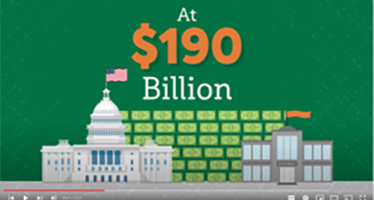Examining the Causes of School Funding Inequity
It’s no secret that some schools and some districts have more funding to work with than others. Now a new report from the Center for American Progress examines inequities in state education finance systems. The findings confirm that in some states, high-poverty districts consistently receive fewer state and local resources than low-poverty districts, a practice that consistently shortchanges larger proportions of our most academically fragile students.
In “The Stealth Inequities of School Funding,” authors Bruce Baker and Sean P. Corcoran examine six states they deem “regressive” — meaning these states fund their neediest districts at lower levels than their more affluent districts — to identify the causes behind the funding gaps. The reasons for these inequities are twofold: the design of state funding formulas and a heavy reliance on local revenues. Both perpetuate the cycle of providing more resources to lower need districts.
The researchers found that at the state level, education funding formulas generally attempt to allocate aid to districts with the highest need. However, other elements within these formulas often undermine the goal. For example, allocating aid according to average daily attendance, rather than enrollment counts, harms high-poverty districts, which tend to have lower attendance rates. Minimum aid and hold-harmless provisions in several states also ensure that districts receive at least a set amount of state aid, irrespective of their abilities to raise funds independently. This leaves fewer state funds available to the districts with less capacity for independent fundraising — districts that would benefit most from additional state aid.
The “Stealth” report finds that, in some states, up to 90-95 percent of district funding comes from local sources. This heavy reliance on local revenue is an important contributor to the funding inequities between school districts. High-poverty districts tend to have lower property values, which reduces their ability to raise revenue from local property taxes. They also may have competing priorities for local public funds, such as public assistance programs, that make it difficult to direct funds to local schools at the same rate as their higher income peers.
Compounding the harm done by the district-to-district inequities highlighted by Baker and Corcoran are school-to-school inequities within districts that put low-income students at a disadvantage. The Ed Trust’s “Close the Hidden Funding Gaps in Our Schools” shows that school districts often funnel more funds to high-wealth schools than to low-wealth schools. Moreover, federal law allows districts to get away with these unfair practices and still receive federal funds.
While high levels of funding certainly don’t guarantee high academic achievement, funding patterns that shortchange the students with the greatest need create unnecessary challenges for students and educators at high-poverty schools, run counter to the core value of fairness, and, in the end, are simply wrong.
—Nicole Tortoriello











